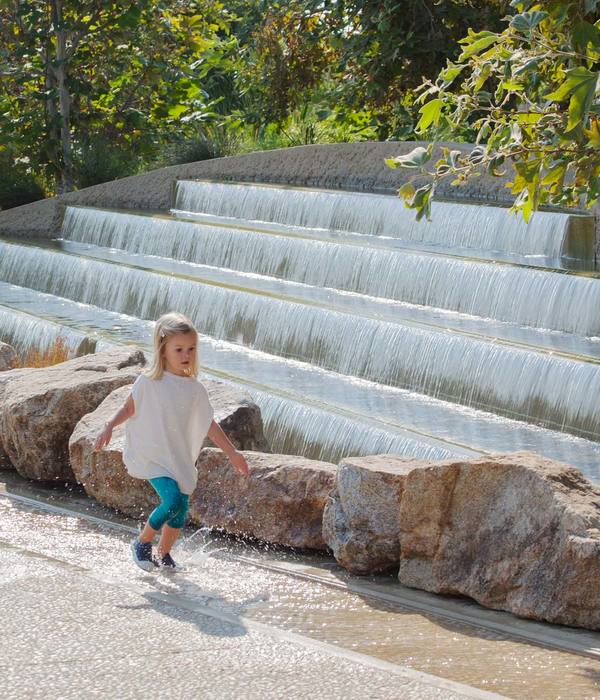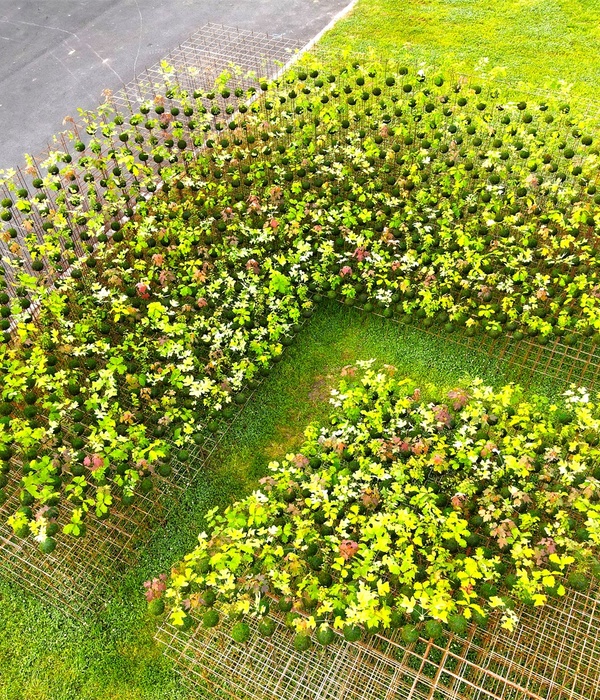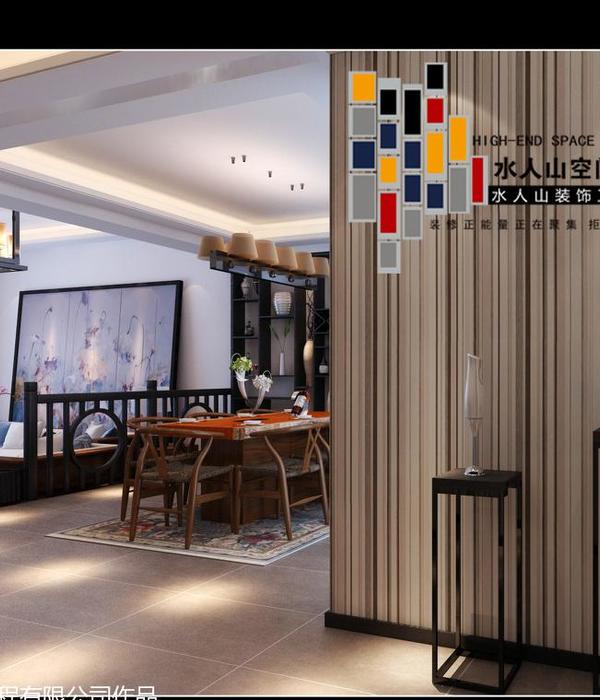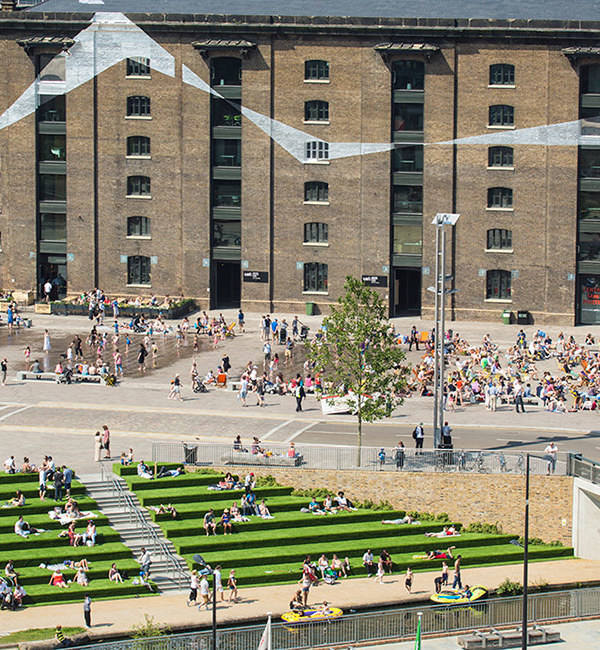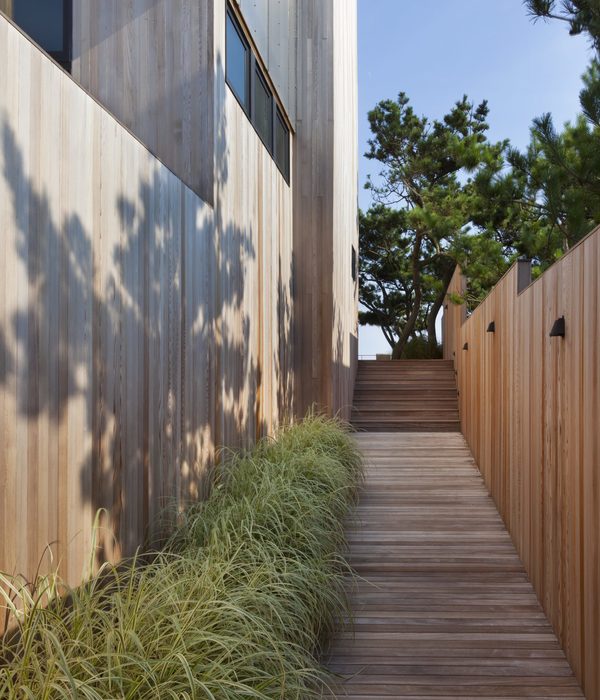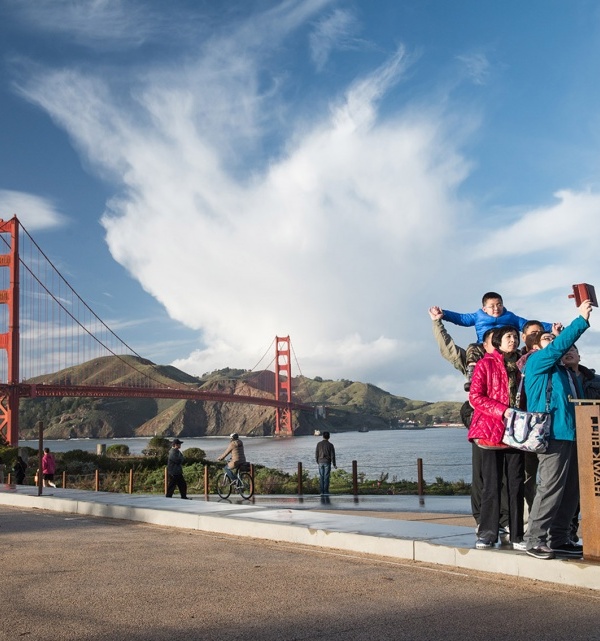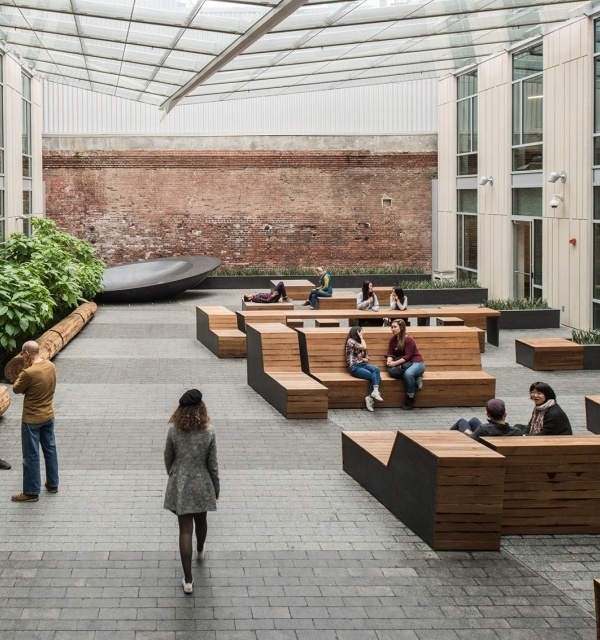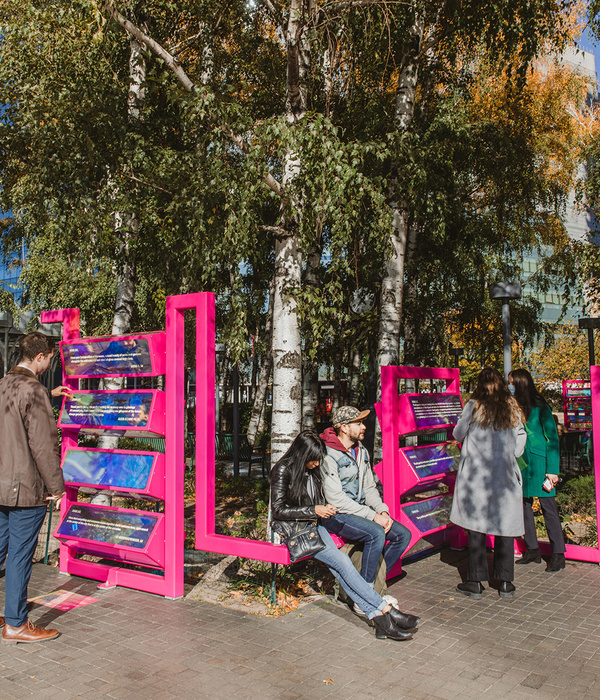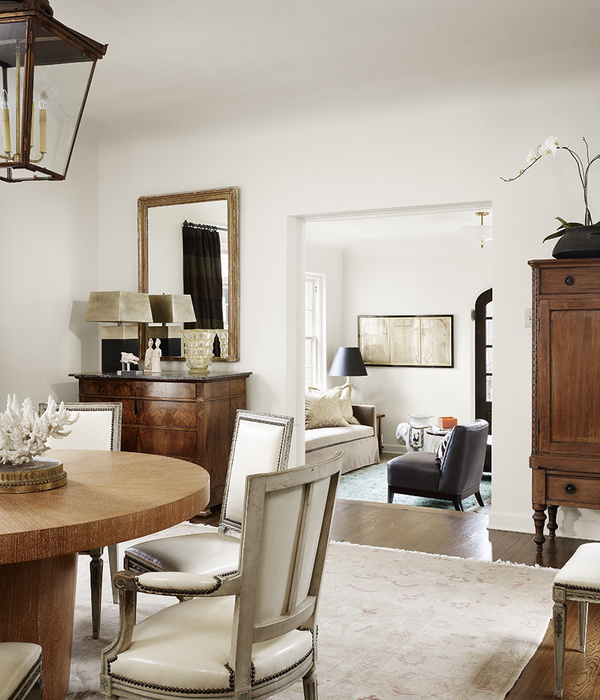北京林业大学参赛作品“丹岩”获“2021 营造大集 | Fair of Making”一等奖。营造大集作为中国建筑学会的科普专项活动,由北京建筑大学主办,北京建筑大学建筑与城市规划学院承办。作为建筑学相关专业本科生采用真实材料进行设计建造的实践活动,营造大集旨在培养学生的建造思维、积累真实建造经验,促进校际交流。
▼视频,the video©北京林业大学
The work “Red rock” of Beijing Forestry University won the first prize of “2021 fair of making”. As a special popular science activity of the Chinese Architectural Society, ‘Fair of Making’ is hosted by Beijing University of Civil Engineering and Architecture and undertaken by the school of architecture and urban planning of Beijing University of Civil Engineering and Architecture. “Fair of Making” is a practical activity for undergraduates majoring in architecture to design and build with real materials. It aims to cultivate students’ construction thinking, accumulate real construction experience and promote inter school communication. A total of 14 teams participated in the competition from 7 universities (in alphabetical order) including North China University of Technology, Beijing University of Technology, Beijing Jiaotong University, Beijing University of Civil Engineering and Architecture, Beijing Forestry University, Tsinghua University and Central Academy of Fine Arts. Since the opening in May, after four months of discussion, design and field construction, 14 works have finally finished in Daxing campus of Beijing University of Civil Engineering and Architecture.
▼项目概览,overview©北京林业大学
本次竞赛活动共有清华大学、中央美术学院、北京交通大学、北京建筑大学、北京林业大学等 14 支代表队参加。经过 4 个月的讨论、设计与实地建造,最终 14 个作品在北京建筑大学大兴校区落地绽放。
A total of 14 teams participated in the competition including Tsinghua University, Central Academy of Fine Arts, Beijing Jiaotong University, Beijing University of Civil Engineering and Architecture, Beijing Forestry University, etc. After four months of discussion, design and field construction, 14 works have finally finished in Daxing campus of Beijing University of Civil Engineering and Architecture.
▼绽放的“丹岩”,blooming red rock©北京林业大学
此竞赛活动的主题为“几何 | 游山”,旨在寻找某种基本几何作为空间逻辑的起点,实验、探索从局部到整体的路径,找到几何与“自然-- 人造”景观(Artificial Landscape) 的对照关系,并将这种关系延伸至身体。北林团队认为可将此次搭建活动比拟古人之园林叠山,选材若选石,搭建似叠山,其解题思路正是叠山大家张南垣所盼“如入岩谷”,此意在塑造“壶中天地”之态。竞赛结束后,作品“丹岩”在北京林业大学校园内的草坪上进行了第二次搭建,成为独特的校园景观,供师生与附近居民欣赏游玩。
The theme of this competition is “Geometry | Tour of Mountain “, which aims to find a basic geometry as the starting point of spatial logic, experiment and explore the path from part to whole, find the contrast relationship between geometry and “nature” – artificial landscape, and extend this relationship to the body.
Team of Beijing Forestry University believes that this building activity can be compared with the ancient garden stacking mountains. The material selection is like selecting stones and the building is like stacking mountains. The idea is exactly what Zhang Nanyuan, a mountain stacking master, hopes to “enter the Rock Valley”, which is intended to shape the state of ” a world in a pot”.
After the competition, the work “Red Rock” was built for the second time on the lawn of Beijing Forestry University, becoming a unique campus landscape for students, teachers and nearby residents to enjoy and play.
在草坪上进行搭建,building on the lawnfor the second time ©北京林业大学
▼独特的校园景观,becoming a unique campus landscape ©北京林业大学
设计不再局限于对于自然山石的具象拟态。在“法”的层面,希望通过从日常生活中取材,探索其几何特性,挖掘其造景精魄;而在“式”上,则重视身体的体验和感受。北林团队的设计把活动规则对场地的限制理解为“方寸之间”的中国古典园林中,正如“壶中天地”的意境,“由外而入,宛若壶中;由内而出,始若人间。除了关注“可观”的静态之景,设计也重视“可游”、“可居”的游山之感。岩洞之中的容纳停歇之所,是获得“可居”之感的关键。同时,设计希望空间能够与风、光、草木产生动态的互动关系,带来不同的感受。
The design is no longer limited to the concrete mimicry of natural rocks. At the level of “law”, hope to explore its geometric characteristics and excavate its landscape essence by taking materials from daily life; In the “style”, pay attention to the experience and feeling of the body.In the design of the team, the restriction of the activity rules on the site is understood as the artistic conception of “heaven and earth in a pot” in the Chinese classical garden of “between square inches”. From the outside, it is like a pot; from the inside, it is like the world. In addition to paying attention to the “considerable” static scenery, the design also pays attention to “tourable” and “habitable” At the same time, the design hopes that the space can have a dynamic interactive relationship with wind, light, vegetation and bring different feelings.
▼丹岩与周边环境的互动,Interaction between‘Red Rock’and surrounding environment©北京林业大学
在“几何丨游山”主题下,团队认为“几何”是一种内在的结构关系,是根据基本单元的特征来生成整体的形态。与此同时,基本单元几何特征的唯一性与单元组合方式多样性的碰撞,创造出了“游山”的多种可能性。
Under the theme of "Geometry | Tour of Mountain", the team believes that "geometry" is an internal structural relationship, which generates the overall form according to the characteristics of the basic unit. At the same time, it’s uniqueness of geometric features of basic elements and diversity of unit combination modes that created a variety of possibilities of "tour of mountain".
▼作品”丹岩”第一次搭建完成,the work“Red Rock”was completed for the first time©北京林业大学
▼作品近景,closer view©北京林业大学
团队选用了红色镂空垃圾桶,这样一种日常可见的材料作为基本几何单元体。利用垃圾桶的圆锥形几何特征,可以塑造出具有优美弧线的穹顶空间。同时镂空的垃圾桶可以产生变幻的光影效果,并与环境相互渗透。由于竞赛主题要求“可预制、可拆解、可重复建造”,因此搭建又是一次事件性的景观营造活动,活动结束后垃圾桶可以转变为校园的日常使用设施。
The team chose the red hollow trash can, a daily visible material, as the basic geometric unit. The dome space with beautiful arc can be shaped by using the conical geometric characteristics of the garbage can. At the same time, hollowed out garbage cans can produce changeable light and shadow effects and penetrate into the environment. As the competition theme requires “prefabrication, disassembly and repeated construction”, the construction is another event landscape construction activity. After the activity, the trash can can be transformed into daily use facilities on the campus.
▼来源日常生活的基础单元材料,Basic unit materials from daily life©北京林业大学
充分思考基础单元体的特性后,团队采用来源于日常的材料——纸杯,进行等比例缩小模拟实验。同时,在前期的实验中不提前构想一个确定的目标形态,而是在实地搭建中,不断进行体验和修改,寻找几何体连接与形体变化的规律与技巧,将搭建与设计融为一体。
After fully considering the characteristics of the basic unit, the team used the paper cup, which is from daily life, to conduct an equal scale reduction simulation experiment. In many shape change experiments, a definite target shape was not conceived in advance, but the construction and design were integrated. In the process of building, find the laws and skills of geometric connection and shape change.
▼等比例缩小纸杯模型的尝试,an attempt to reduce the paper cup model in equal scale ©北京林业大学
营造利用了基础单元体的几何特征的“机巧”,依托垃圾桶的圆锥形几何特征,塑造优美弧线的穹顶空间。在基础单元的连接方式上,利用红色绑扎带,将锥体垃圾桶 3 个一小组 10 个一大组进行绑扎,形成稳定的三角绑扎结构。整个作品的搭建仅用 6 小时完成。
Create a “dexterity” using the geometric characteristics of the existing basic unit: the conical geometric characteristics of the trash can can be used to create a dome space with a beautiful arc. At the same time, the trash can is hollow, which can be breathable and integrated with the environment. In the treatment of foundation unit, red binding tape is used to bind the cone garbage cans in three groups and ten groups to form a stable triangular binding structure. The team completed the construction of the whole work in only 6 hours.
稳定的三角形绑扎结构,stable triangular binding structure©北京林业大学
搭建的过程“漫不经心”,不设限定,追求“天趣”。在搭建过程中,随时利用身体的不同体验方式来调整完善设计,利用单元的基础组合方式与变型组合方式来实现这些游览体验,创造出确定与不确定性结合的作品。如陈从周先生在《续说园》中认为“石无定形,山有定法。所谓法者,脉络气势之谓,与画理一也。”
It is also “careless” in plasticity, without restrictions and pursuing “natural interest”: in the process of construction, it can adjust and improve the design at any time by using different experience modes of the body, realize these tour experiences by using the basic combination mode and variant combination mode of the unit, and create the uniqueness of the combination of certainty and uncertainty.
For example, Mr. Chen Congzhou believes in “the stone is amorphous, and the mountain has a fixed method. The so-called method is called the context and momentum, which is the same as the painting theory.” He abides by his method, and then follows the trend to obtain his “style”.
▼绑扎过程与细节,binding process and details©北京林业大学
“妙手偶得”是营造过程中另一关键。采用双层垃圾桶嵌套对底层基础结构进行加强。同时,在观察其形态特征与整体的关系后,保留连接处绑扎带尾部纤细长绳,丰富岩洞表皮的体验。最终形成的整体为多元壳体,壳体可以使得外力作用在结构体的表面上,具有很好的空间传力性能。整个设计作品不再另设承重结构,其单元本身,既是表皮形态,又是承重单元。
” Cherish by chance ” is another key in the construction process. Double layer trash can nesting is adopted to strengthen the underlying infrastructure. At the same time, after observing the relationship between its morphological characteristics and the whole, keep the thin long rope at the tail of the binding belt at the connection to enrich the experience of the cave skin.The final whole is a multi-element shell, which can make the external force act on the surface of the structure and has good spatial force transfer performance. The whole design work is no longer provided with another load-bearing structure, and its unit itself is not only the skin shape, but also the load-bearing unit. At the same time, the garbage cans on the bottom floor are stacked in double layers to strengthen the tolerance. The whole design work is integrated.
▼细节,details©北京林业大学
丹岩所给予的审美体验,正如张南垣新法中的欣赏,重在“拟入画中行”。静观时体验外在之“景”,动观有内在之“境”。其可分为赏态、听音、赏影、触形,四种“静观”方式;又有曲行、折返、依仗、洞观,四层“动态”体验。
赏态。远观作品,本身为红色,状若小山,故以赋名“丹岩”。小山轻盈而重重叠叠,如女子秀丽朱妍,故为“丹”;小山可触可入可依仗,坚韧顽固,此为“岩”。岩口低矮,洞口低于平视时的视线位置,给人以隐秘之感,身处其中进行形态欣赏,这样内向的、较为封闭的空间,是归隐静心的场所。
The aesthetic experience given by ‘Red rock’, just like the appreciation in Zhang Nanyuan’s new method, focuses on “going in painting”. Experience the external “scenery” during static observation, and there is an internal “environment” in dynamic observation. It can be divided into four ways: appreciating state, listening to sound, appreciating shadow and touching shape; There are also four levels of “dynamic” experience: detour walking, turning back, relying and looking out in the cave.
Appreciation. Viewed from a distance, the work itself is red and looks like a hill, so it is named ‘Red Rock’. The hills are light and heavy, overlapping like a beautiful woman, so they are called “Dan”; The hills are touchable, accessible , reliable, tough and stubborn, so this is “rock”. The rock mouth is low, and the hole is lower than the line of sight when looking down, giving people a sense of seclusion. Being in it for form appreciation, such an inward and relatively closed space is a place for retreat and meditation.
孩童的参与,child participation©北京林业大学
听音。山水有清音。岩壁多有缝隙,而身置其中,恰逢微风过境,动静交织,固有一番乐趣。康熙《无锡县志》中秦松龄所言“坐卧移日,忽忽在万山之中。”也可描述此感。“忽忽”在这里有了具象的表示,为风声与岩体相触的声音。
Listen. Mountains and rivers have a clear sound. There are many gaps in the rock wall, and the body is placed in it, which coincides with the passage of the breeze. Movement and static interwoven, which is inherently fun. This feeling can also be described by Qin Songling’s words “sitting, lying and moving the sun, suddenly in the mountains” in the Wuxi County chronicles of Kangxi. “Huhu” has a concrete expression here, which is the sound of the wind touching the rock mass.
▼游者在倾听,the tourists are listening ©北京林业大学
赏影。赏影是赏虚实结合的意趣所在。光影与人影相映成趣,虚实成境。丹岩整体通透,丝线绰约,投射在地面上的情状生动,光影斑驳。
触形。椎体累累,形势自如,引人伸手触探究竟,或是试图晃动,或是试图推移,或是试图抬举,皆是探境之举,意外之趣。而柱体上缠立柔软红绳,好似绒毛,又引人轻抚、梳理,何尝不是另一番对待柔弱之物的乐趣。一柔一刚,感触不同。
Enjoy the movie. Appreciating the shadow is the interest of appreciating the combination of deficiency and reality. Light and Shadow form an interesting contrast with each other, and virtual reality forms an environment. The ‘Red Rock’ is transparent as a whole, and the silk thread is graceful. The situation projected on the ground is vivid and mottled.
Touch shape. The vertebral body is numerous, the situation is free, and people reach out to explore the truth, or try to shake, or try to move, or try to lift, which are all exploration moves and unexpected interests. The column is wrapped with a soft red rope, which looks like fluff, and makes people caress and comb. It’s another fun to treat weak things. One is soft and one is hard. What you touch is different, and what you read is also different.
▼触碰探索,touch exploration©北京林业大学
洞观。凿壁为洞,框景如画。洞壁为实,窗洞为虚,虚实相生,景色交融,给人以物我混同的思考。
Detour walking. The winding path leads to secluded, which is the traveling experience formed by the contraction or extension of the rock mass, and the scene is particularly vivid. The road turns and meanders, connecting the scenery everywhere. Suddenly, the scenery is different everywhere.
Turn back. ‘Red Rock’ has no fixed tour route. There are many roads for tourists to choose at will. It is interesting to turn back from the original road when encountering the end road.
Rely on. The stone wall is hard and the surface is flat. It is suit to rest a little.
Looking out in the cave. The chiseled wall is a hole with picturesque frame scenery. The cave wall is solid, the window hole is virtual, the virtual and real coexist, and the scenery blends, giving people the thinking of mixing things and me.
▼孩童在其中绕行、奔跑,Children walk and run in it©北京林业大学
▼洞观,A penetrating view©北京林业大学
一是从视觉上塑造“山岩”,垒石嵌空,曲折平远,巧夺天工;二则是注重身体上对于山岩的感知,到达“如入岩谷”的境界体验。画意叠山,以留白的手法,将作品本身进行延续,与远处的树林天空交相呼应,从而达到“象外之境”,此为“平远”。所入之境,不仅是身体之境,更是心境。曲径窥探,入洞遁隐,归隐取静,此为“深远”;憩石静观,沉浸自然;仰首望远,心潮澎湃,此为“高远”。作品极简巧妙,结构体系和空间形态完美结合。诗意浪漫,引发游览者多维解读,在游“山”中体验真知。
First, create “mountain rocks” visually, build stones and embed them in the air, with twists and turns, plain and far, and excellent workmanship; The second is to pay attention to the physical perception of mountains and rocks, so as to achieve the realm experience of “like entering the Rock Valley”.The painting means folding mountains, continuing the work itself with the technique of leaving blank, and echoing with the distant woods and sky, so as to achieve “the land outside the image”, which is “Pingyuan”. The state of entering is not only the state of body, but also the state of mind.; Go into the cave and hide, return to seclusion and take peace. This is “Shenyuan”; Rest on the stone and immerse yourself in nature; Look up and look far, and your heart is surging. This is “Gaoyuan”.The work is extremely simple and ingenious, and the structural system is perfectly combined with the spatial form. It’s poetic and romantic that leading visitors to multi-dimensional interpretation and experience true knowledge in visiting the “mountain”.
▼凝望,Gaze©北京林业大学
▼项目更多图片
{{item.text_origin}}

